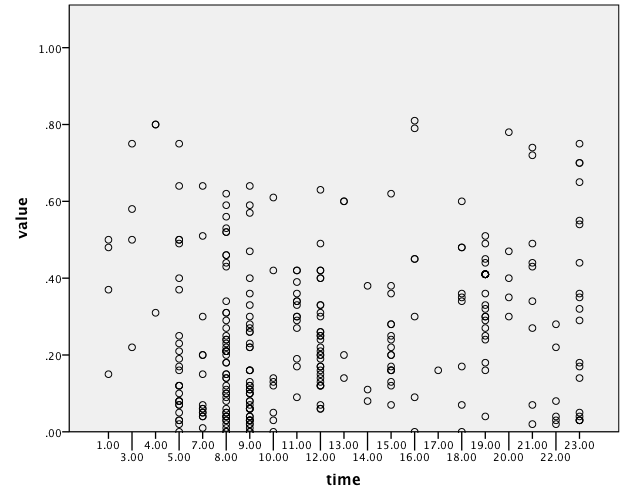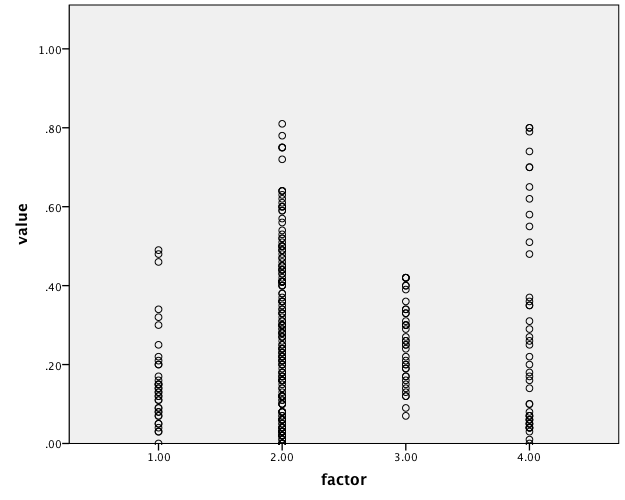I have some time-series data that I wish to test to see if a certain factor has an effect. There are few samples per time step (10 on average), but the whole time-series has 306 samples. When divided into groups based upon a factor the result is non-normal and non homogeneous. I wish to test the effect of the factor, and if possible, determine a linear trend over the time-series accounting for this effect.
To test the effect, I performed an aligned rank transform on the data, then used an ANOVA. However this does not take into account time. To do this I tried a General Linear Model on the transformed data using the factor as a fixed effect and time as a covariate. Does this sound correct?
What is the correct way to include time information in a factorial analysis when the number of samples per unit time is quite low?
Edit: Additional information:
Time Series

Factor

Note: software used is SPSS, stats experience is beginner.
Download Data Here:
